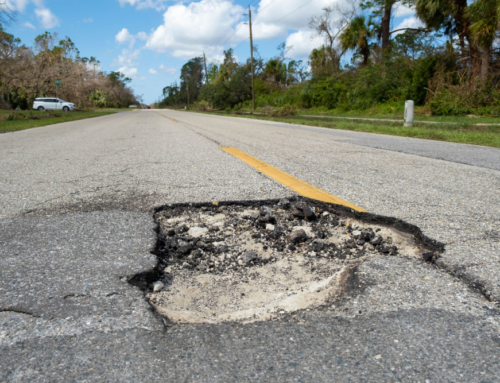Car accidents are among the leading causes of injuries worldwide, and one of the most common injuries resulting from these accidents is whiplash. Whiplash, often dismissed as a minor ailment, can have significant long-term effects on a victim’s health, productivity, and quality of life. At Payas, Payas, and Payas, we understand the challenges faced by those suffering from whiplash injuries and the importance of seeking proper medical care and legal assistance. This article explores the connection between car accidents and whiplash injuries, the symptoms to watch for, and how to navigate the legal process if you’ve been affected.
What is Whiplash?
Understanding the Mechanics of Whiplash
Whiplash is a soft tissue injury that occurs when the neck is rapidly forced back and forth in a motion similar to cracking a whip. This sudden movement can strain or tear the muscles, ligaments, and tendons in the neck, leading to pain, stiffness, and other symptoms. While it’s commonly associated with rear-end car collisions, whiplash can also result from side-impact or head-on crashes, as well as other incidents that cause sudden force to the neck.
The severity of a whiplash injury depends on several factors, including the speed and force of the collision, the position of the victim’s head and neck at the time of impact, and whether the victim was wearing a seatbelt. Even low-speed accidents can cause significant whiplash injuries, as the neck is particularly vulnerable to rapid motion and strain.
Common Misconceptions About Whiplash
One of the most pervasive misconceptions about whiplash is that it’s a minor or insignificant injury. Many people mistakenly believe that whiplash resolves on its own within a few days, but this is not always the case. While some victims recover quickly, others experience chronic pain and complications that require ongoing medical treatment and rehabilitation. Additionally, whiplash injuries may not present immediate symptoms, leading victims to underestimate the severity of their condition.
Dismissing whiplash as a minor issue can result in delayed treatment, which may worsen the injury and prolong recovery. It’s essential to recognize the seriousness of whiplash and seek medical attention promptly after a car accident, even if you don’t feel significant pain initially.
Symptoms and Diagnosis of Whiplash
Recognizing the Symptoms of Whiplash
The symptoms of whiplash can vary widely from person to person, but common signs include neck pain and stiffness, headaches, and reduced range of motion in the neck. Other symptoms may include shoulder and upper back pain, dizziness, fatigue, and difficulty concentrating. In some cases, victims may experience blurred vision, ringing in the ears (tinnitus), or sleep disturbances as a result of their injury.
These symptoms may appear immediately after the accident or develop gradually over the next 24 to 48 hours. It’s important to monitor your condition closely and report any new or worsening symptoms to a healthcare provider. Whiplash injuries can also lead to psychological symptoms, such as anxiety or depression, particularly if the injury interferes with daily activities or causes chronic pain.
How Whiplash is Diagnosed
Diagnosing whiplash typically begins with a thorough physical examination and a review of the patient’s medical history. A healthcare provider may assess the range of motion in the neck, check for tenderness or swelling, and evaluate the patient’s posture and alignment. While imaging tests such as X-rays, MRIs, or CT scans cannot detect soft tissue damage, they can help rule out other injuries, such as fractures or dislocations, that may accompany whiplash.
Accurate diagnosis is essential for developing an effective treatment plan and documenting the injury for legal purposes. If you suspect you have whiplash after a car accident, seek medical attention promptly and ensure that all symptoms and findings are documented in your medical records.
Treatment and Recovery
Medical Treatment for Whiplash
The treatment for whiplash typically focuses on relieving pain, reducing inflammation, and restoring normal movement and function in the neck. Initial treatment may include rest, ice or heat therapy, and over-the-counter pain relievers. In more severe cases, prescription medications, physical therapy, or chiropractic care may be necessary to address the injury and prevent long-term complications.
Physical therapy plays a crucial role in the recovery process by strengthening the muscles, improving flexibility, and promoting proper posture. Therapists may use techniques such as massage, stretching exercises, and electrical stimulation to alleviate pain and support healing. For chronic pain or severe cases, interventional treatments like injections or surgical procedures may be considered.
Factors That Affect Recovery
Recovery from whiplash can vary widely depending on the severity of the injury, the victim’s overall health, and the timeliness of treatment. While some individuals recover fully within a few weeks, others may experience ongoing pain and stiffness for months or even years. Delayed treatment, pre-existing conditions, or complications such as nerve damage can prolong recovery and increase the likelihood of chronic issues.
It’s important to follow your healthcare provider’s recommendations and attend all follow-up appointments to monitor your progress. Consistent treatment and rehabilitation are key to achieving the best possible outcome and preventing long-term consequences.
Legal Considerations for Whiplash Injuries
Proving the Connection Between the Accident and the Injury
One of the most critical factors in personal injury cases involving whiplash is establishing a clear link between the car accident and the injury. Insurance companies and defense attorneys often argue that whiplash injuries are exaggerated or unrelated to the accident, particularly if symptoms are delayed, or the collision occurred at a low speed. Strong evidence is essential to counter these arguments.
Medical records play a central role in proving the connection between the accident and the injury. Prompt medical attention and detailed documentation of symptoms, diagnoses, and treatments strengthen your claim. Photographs of vehicle damage, police reports, and witness statements can also support your case by demonstrating the severity of the collision and its impact on your body.
Seeking Compensation for Whiplash Injuries
Victims of whiplash injuries may be entitled to compensation for medical expenses, lost wages, pain and suffering, and other damages. The amount of compensation depends on factors such as the severity of the injury, the cost of treatment, and the impact on the victim’s quality of life. In cases of long-term or permanent injuries, compensation may also include future medical costs and lost earning capacity.
Negotiating with insurance companies can be challenging, as they often attempt to minimize payouts by questioning the validity or severity of the injury. An experienced personal injury attorney can advocate on your behalf, ensuring that your rights are protected and that you receive fair compensation for your losses.
The Importance of Legal Representation
How an Attorney Can Help
Navigating the legal process after a car accident can be overwhelming, especially when dealing with whiplash injuries that may not be immediately visible or understood. A personal injury attorney with experience in car accident cases can provide invaluable support by gathering evidence, negotiating with insurance companies, and representing you in court if necessary. Their expertise ensures that all aspects of your case are handled professionally and thoroughly.
An attorney can also help you calculate the full extent of your damages, including economic and non-economic losses. They will work with medical experts, vocational specialists, and other professionals to build a strong case that accurately reflects the impact of the injury on your life.
Protecting Your Rights
Insurance companies often use tactics such as offering lowball settlements or pressuring victims to accept quick payouts. Without legal representation, you may be at a disadvantage when negotiating for fair compensation. An experienced attorney understands these tactics and can counter them effectively, ensuring that your rights are upheld and that you receive the compensation you deserve.
At Payas, Payas, and Payas, we are committed to advocating for victims of car accidents and whiplash injuries. Our team works tirelessly to protect your interests and achieve the best possible outcome for your case.
Conclusion: Taking Action After a Whiplash Injury
Whiplash injuries may be common, but their impact can be anything but minor. Understanding the connection between car accidents and whiplash, recognizing the symptoms, and seeking timely medical care are crucial steps in protecting your health and legal rights. If you’ve suffered a whiplash injury due to a car accident, don’t navigate the recovery and legal process alone.
Contact Payas, Payas, and Payas today for a free consultation with our experienced personal injury attorneys. We will evaluate your case, guide you through the legal process, and fight to secure the compensation you deserve. Let us handle the legal complexities while you focus on your recovery. Call us now to take the first step toward justice and healing.








